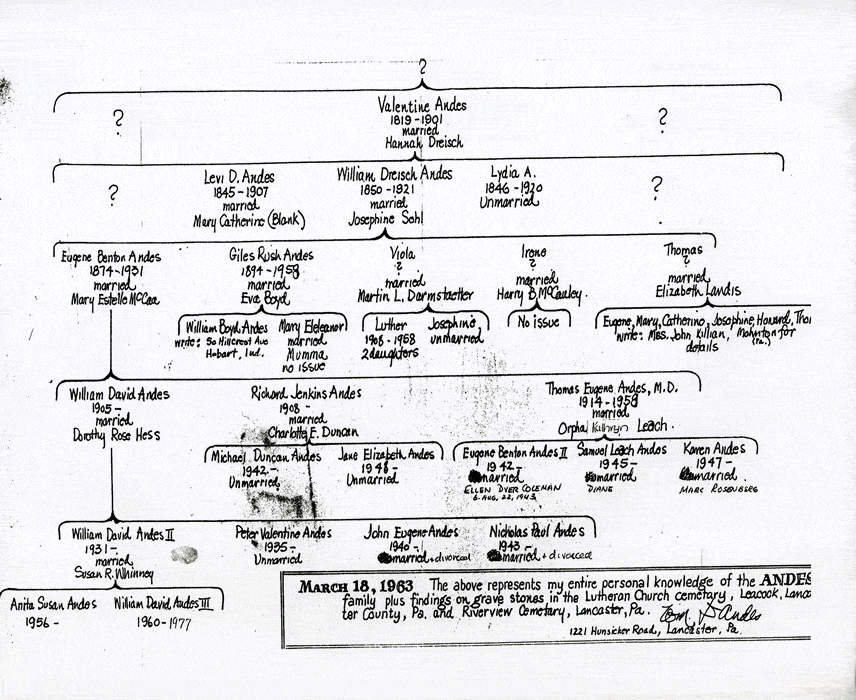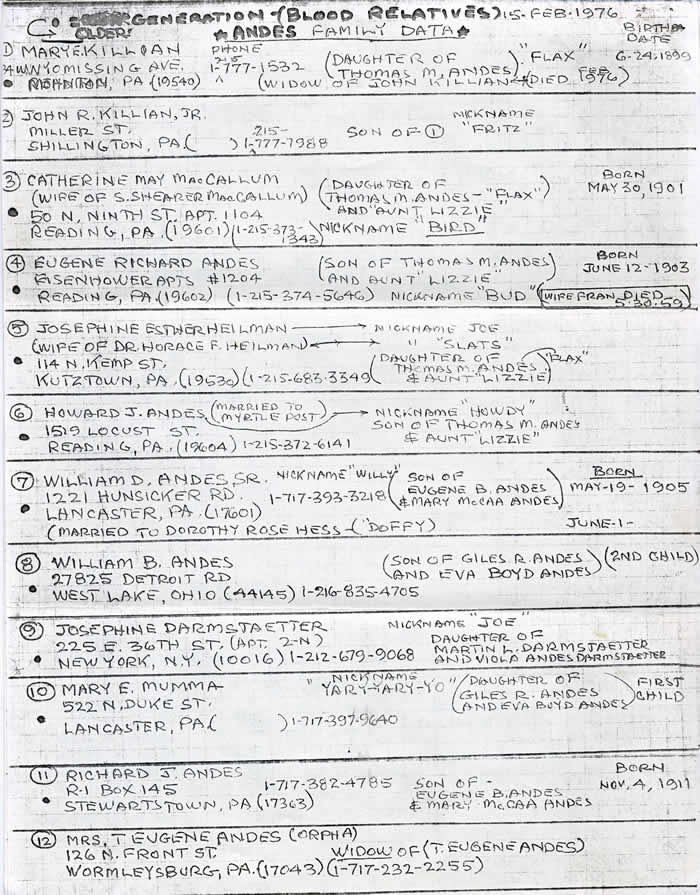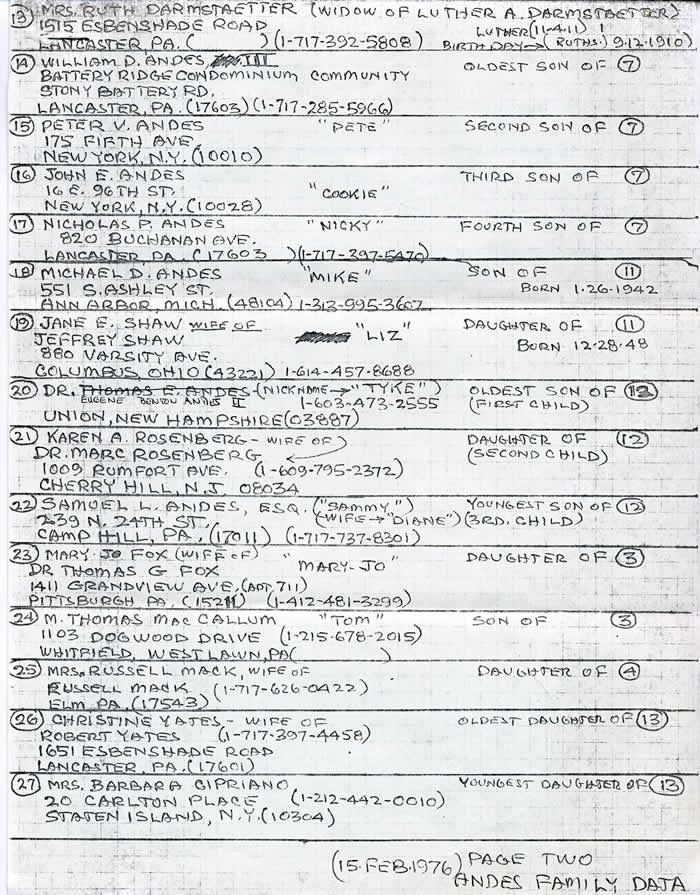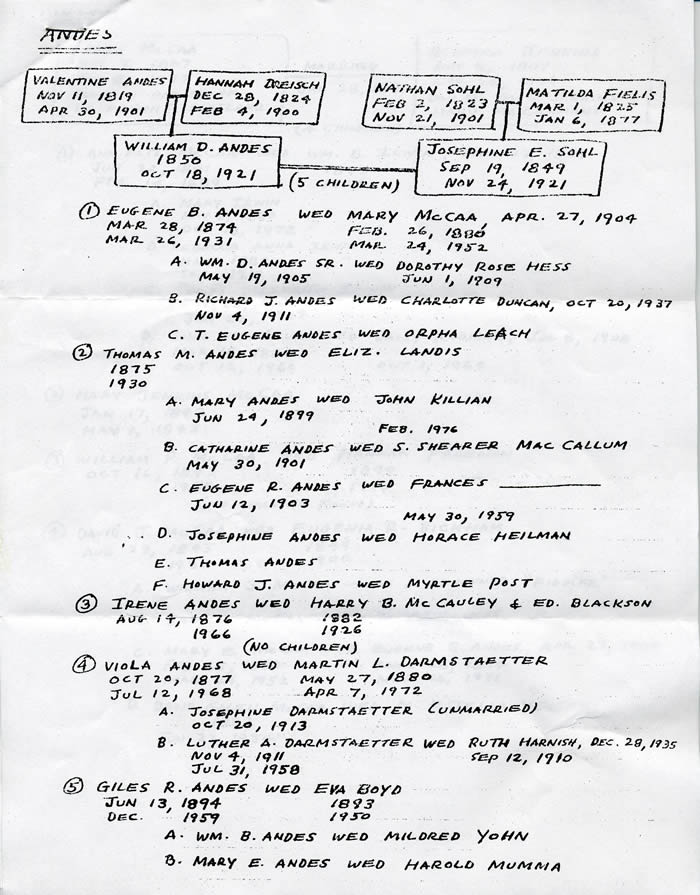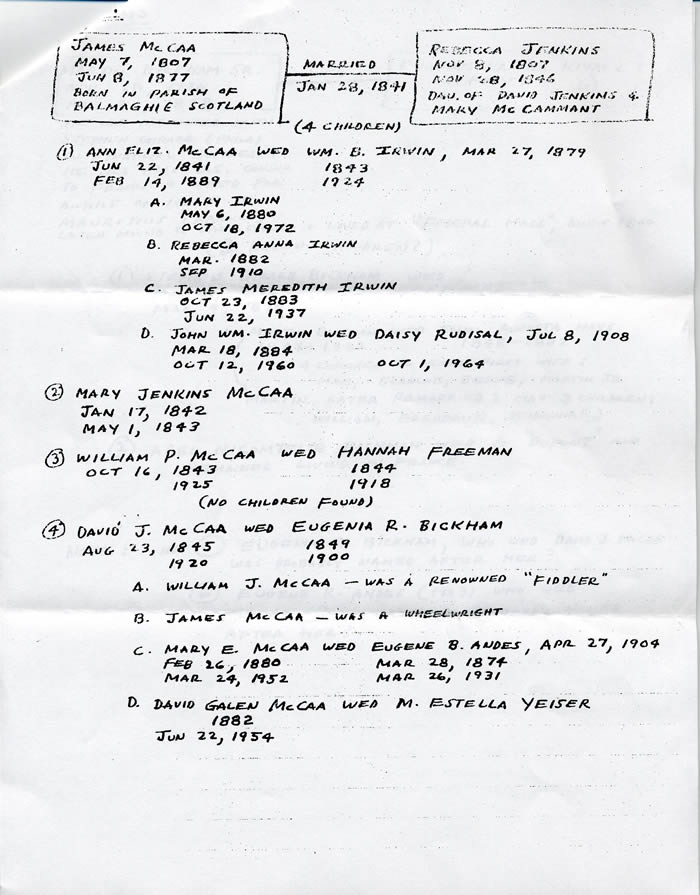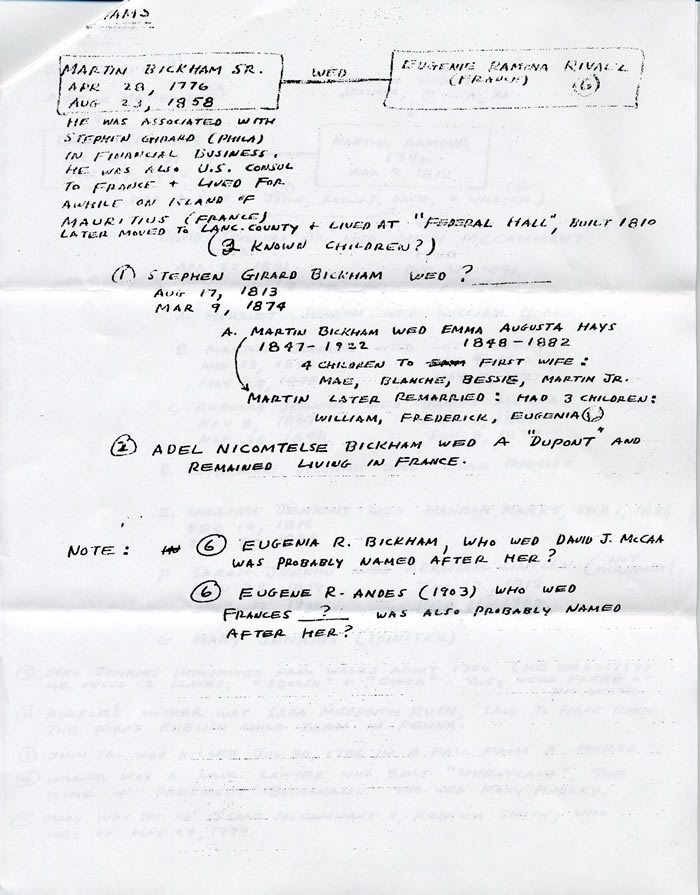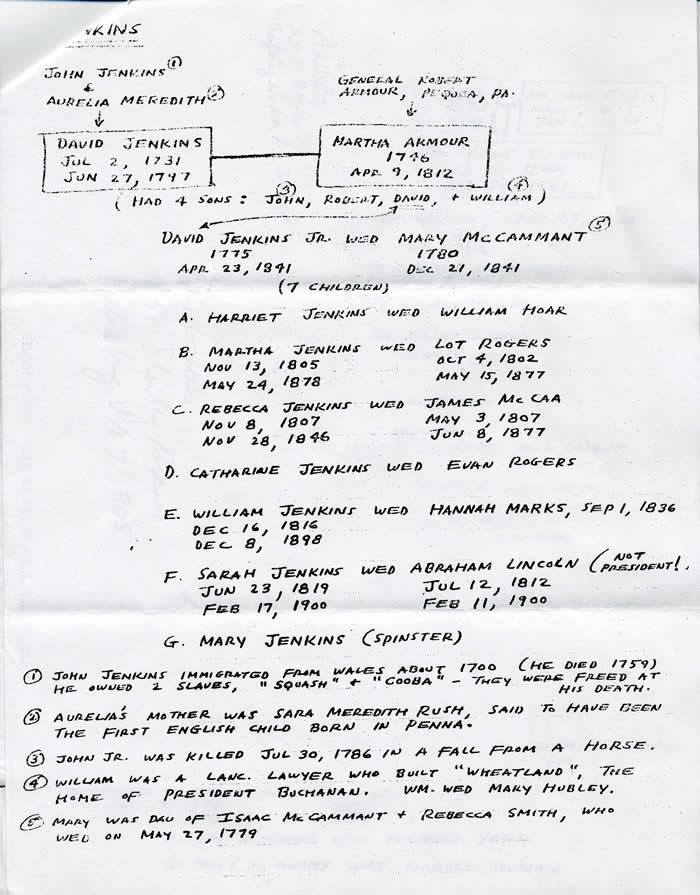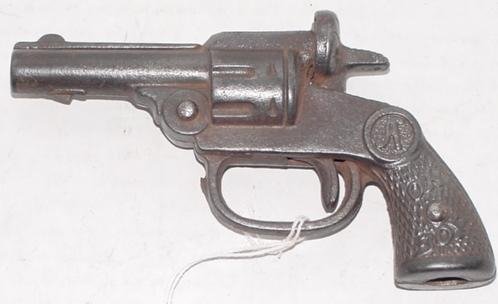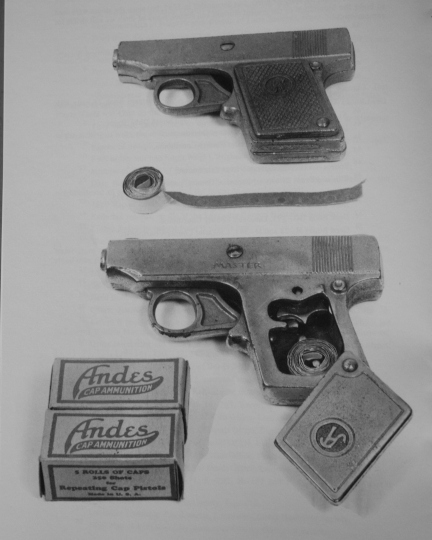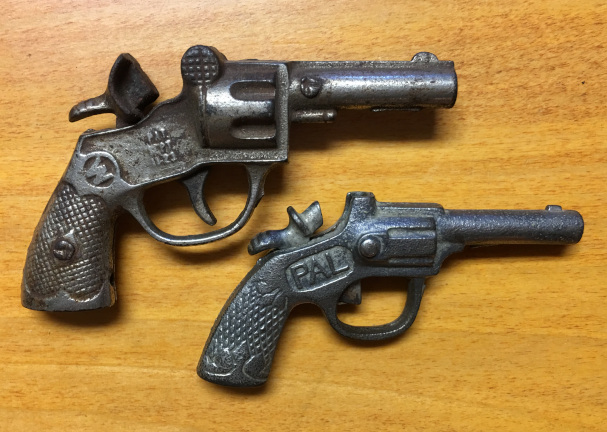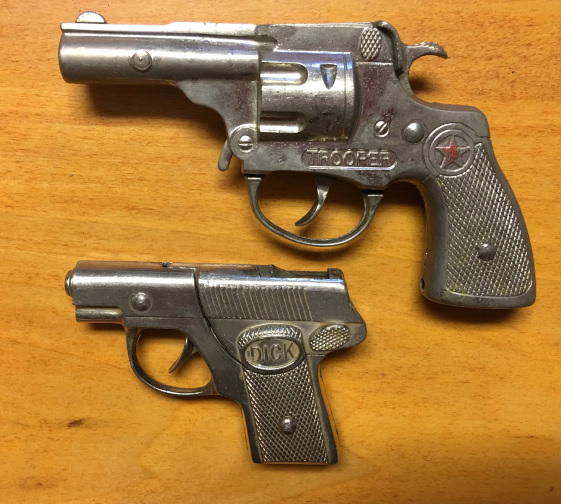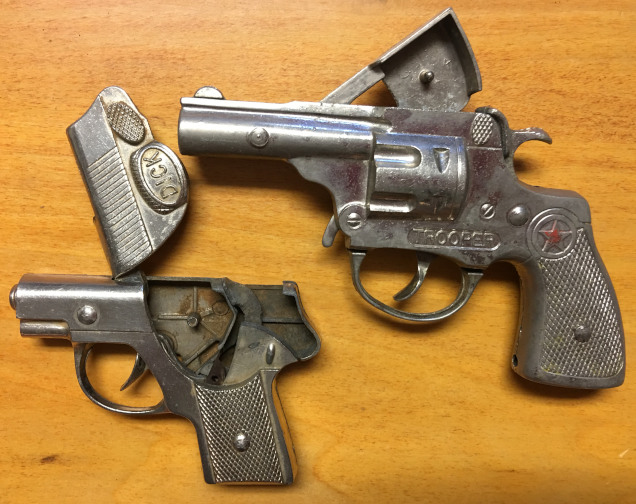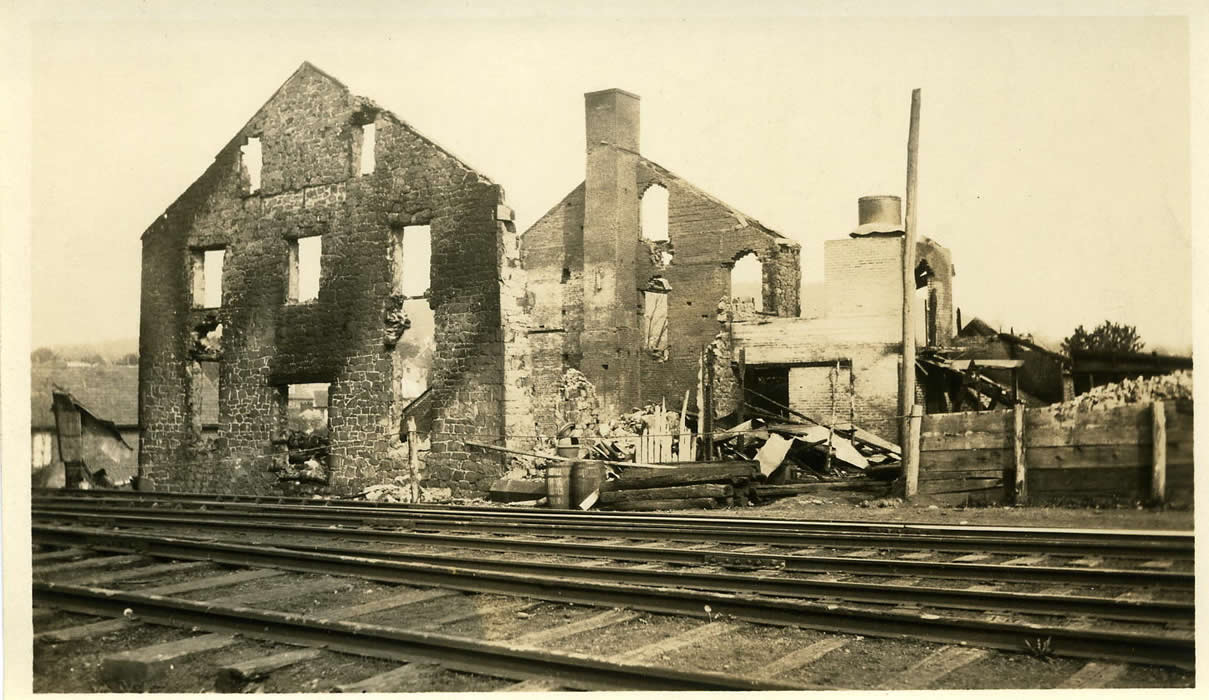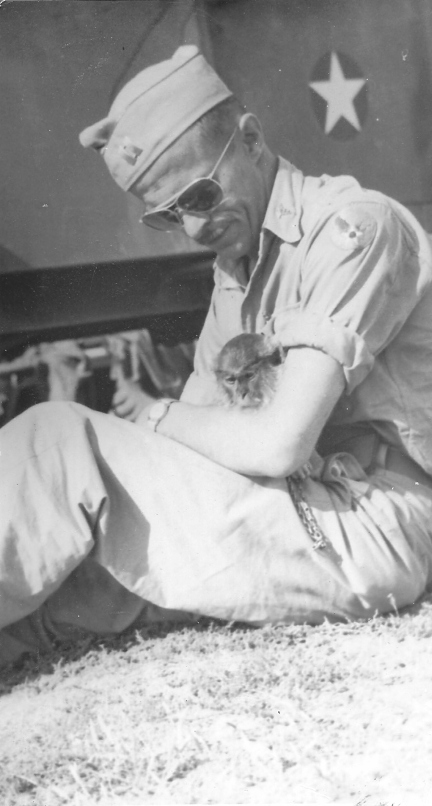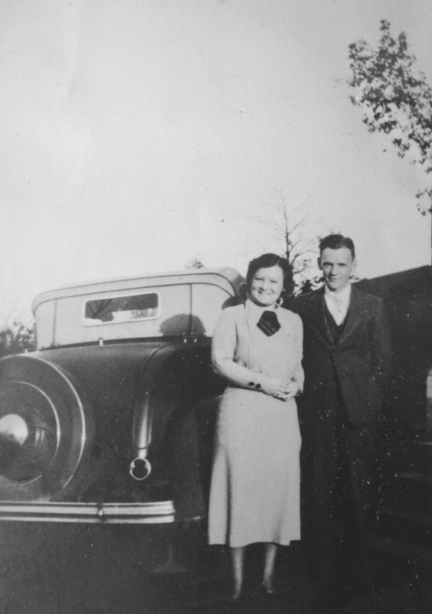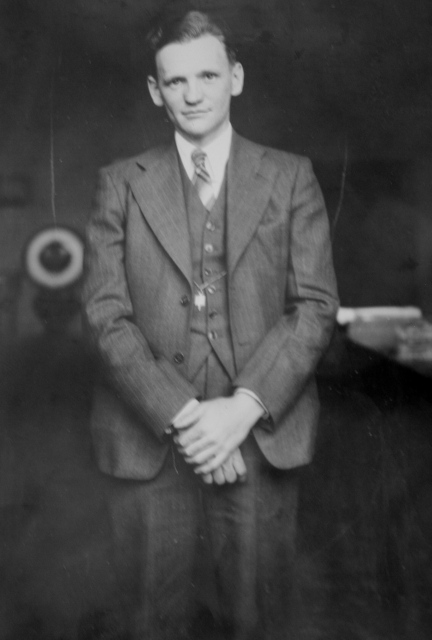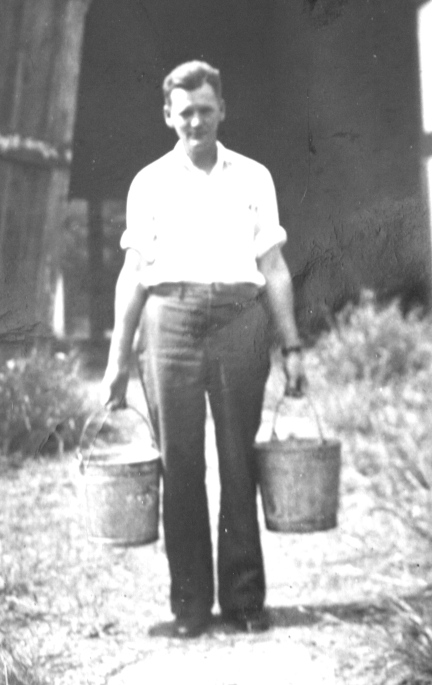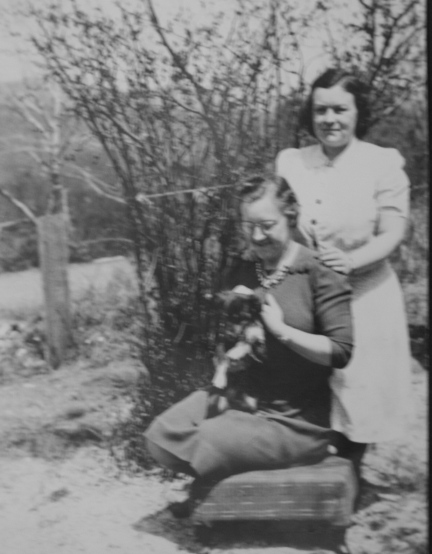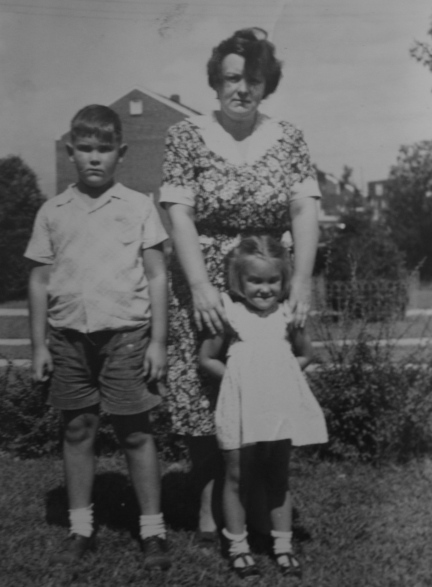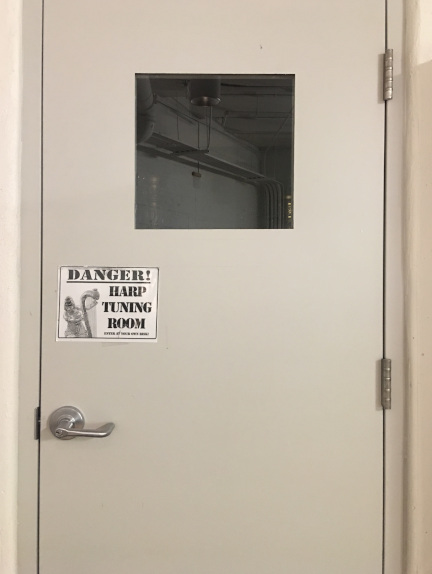There's not a great deal of information on this page for
those who are serious geneological researchers, but it does contain information
back a few generations from our current one.
First, there is some information on the Andes family in Pennsylvania.
The information is from memory of family members living at the time. Their
recollections are presented as copies of original documents.
Following that, are some pictures of a few of those mentioned in the documents
and some information on the foundry owned and run by Eugene Andes in Lancaster,
Pennsylvania, until his death in 1931. According to family lore, one of the people
he assisted and encouraged in the early days of the cast iron toy industry was
John Hubley, of the Hubley Toy Company. The families remained close through
the years and my uncle William's advertising agency did the Hubley advertising
for decades.
My father, Thomas, worked at the factory as a young lad and recalls
stenciling mailing addresses onto wooden crates of toys for shipment to
Japan. Times change.
Family Tree by William D. Andes from about 1963, with some hand written updates in the 1970s.
These are notes made by Richard Andes, brother of William, around the same
time. They are more extensive and include information also on the Jenkins Family.
And another geneology prepared by a distant relative, Dorothy Andes Nickel,
of York, Pennsylvania. Her branch of the family descended from Francis
Jacob and our branch from Valentin(e).
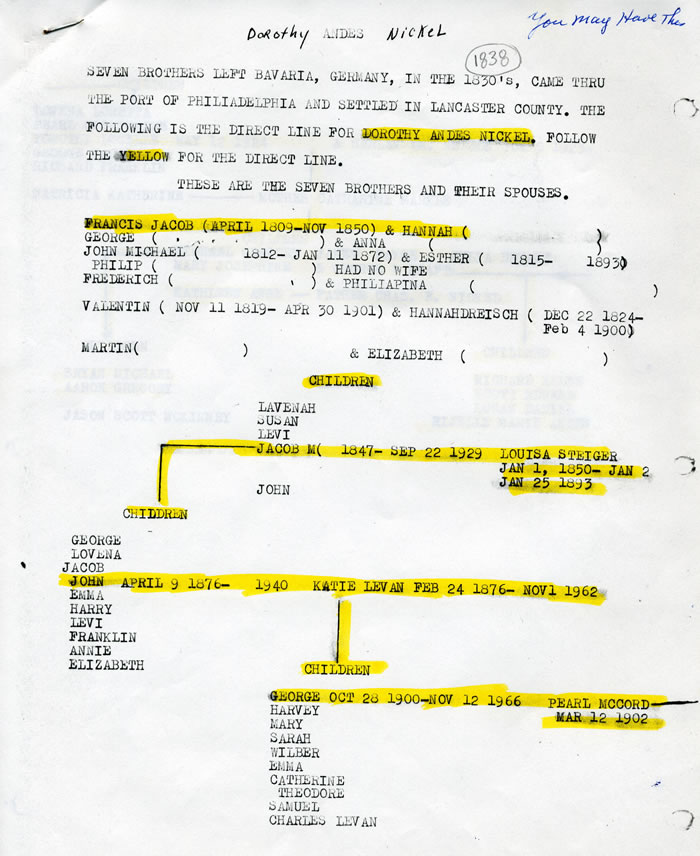
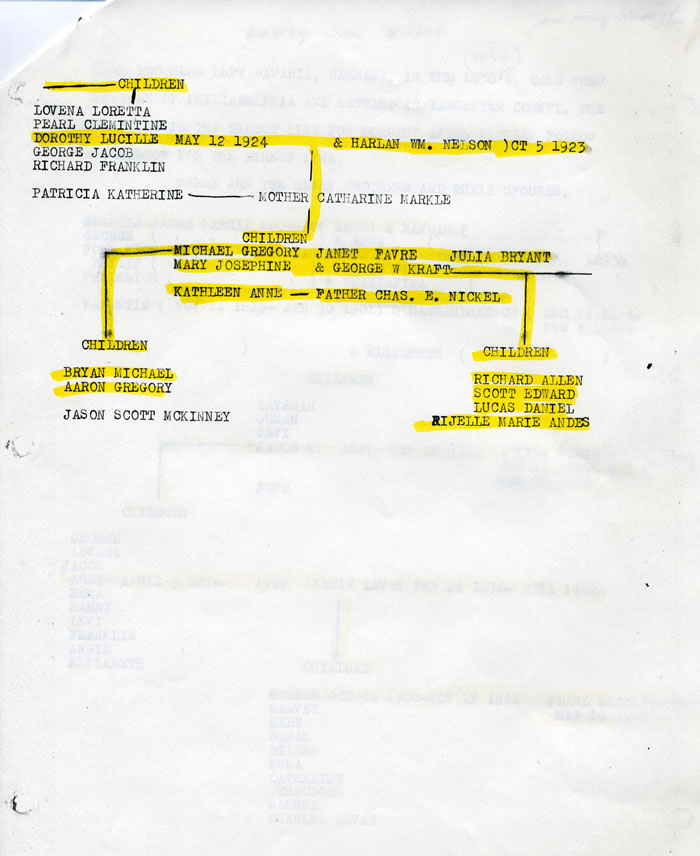
Grandfather, Eugene Benton Andes, was a "machinist" in the days when
people of that trade made and invented machines. One of his early machines
was one that made paper "caps" for toy guns. Earlier versions of paper
caps were unstable and dangerous, and probably used firing caps
similar to those used in weapons from the Civil War. The toy
cap gun industry may have developed as a way for former gun makers
and cap makers to stay in business. His invention improved the caps and
led to changes in the formulation of the explosive powder in them and the
later development of roll caps.
Andes operated businesses in Lancaster, Pennsylvania, from 1919 and until his death in 1930.
He died of carbon monoxide poisoning while working
on an early motor car, one of the first in Lancaster. The company started out
making paper caps and cast iron components for Kilgore cap guns and cannons and
later made cast iron toys such as wagons, airplanes, trucks, and autos. The company merged
with Kilgore and Federal Manufacturing
in 1925-7 and became American Toys, which operated for a few years until merger dissolved
and Andes continued in business as Andes, Incorporated.
Here's a link to an article written by William Andes about the Foundry. It was
written for the Lancaster History Museum, and focuses on the toy cap guns and caps, but
the foundry made other toys, too.
History of Andes Foundry Company
This is a patent from December 1922 for a cap pistol that fired
a single cap. According to my father, Thomas, the pistol was different
from others on the market in that it has a flange around the hammer so that
sparks and debris from the exploding cap are directed forward. This feature
came about because children of the time when playing with cap pistols
would hold them up to their eye to "aim" them, as they saw actors in movies
do and the result, because the caps of the time were larger with more explosive
power than later, was an epidemic of eye injuries in children.
Here's the original patent and a photo of one of the guns made from this
design. This particular model was named "Oh Boy" and got the name when
grandfather showed a prototype to my father, who exclaimed "Oh, Boy" when
he saw it. This same design was duplicated in China and we found a basket
of them in the Museum Shop of the New Mexico Natural History Museum in
Santa Fe when we lived there. The copy was pretty rough and had a
patina to suggest it was antique and but included
the Oh Boy name and the Andes Foundry logo. A photo of that copy is below the
picture of the original. Flattery, as it is said.
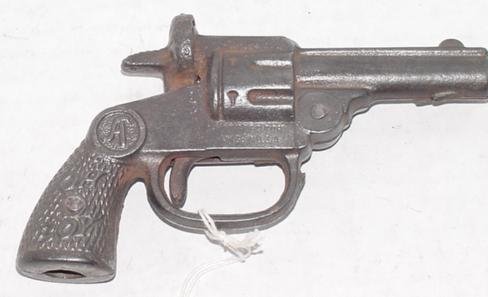

Another patent from 1922 for a pistol using the new
roll caps made by the company, and a photo of the pistol
made from the patent design. The photo is from the article
written by William Andes, above.
And here are some pictures of various cap guns of the time.
There are some single shot guns without the protective flange
on the hammer, so you can see the danger. Later, other
toy gun makers copied the patented design, but Andes never
enforced the patent rights as he was more concerned for the
safety of children playing with any toy cap pistol. And there
are also photos of other guns using the roll caps, which soon
became universal.
The Foundry after the fire.
Following are some pictures of people and places mentioned above.
The first is of Eugene B. Andes and his son, Thomas Eugene Andes,
of Lancaster, Pennsylvania. The second is of Eugene B. Andes II,
grandson of Eugene, son of Thomas, with his three sons, Thomas
Eugene Andes (II), Richard Charles Andes, and Robert Coleman Andes.
The decendant generations seem less formal, at least in dress.
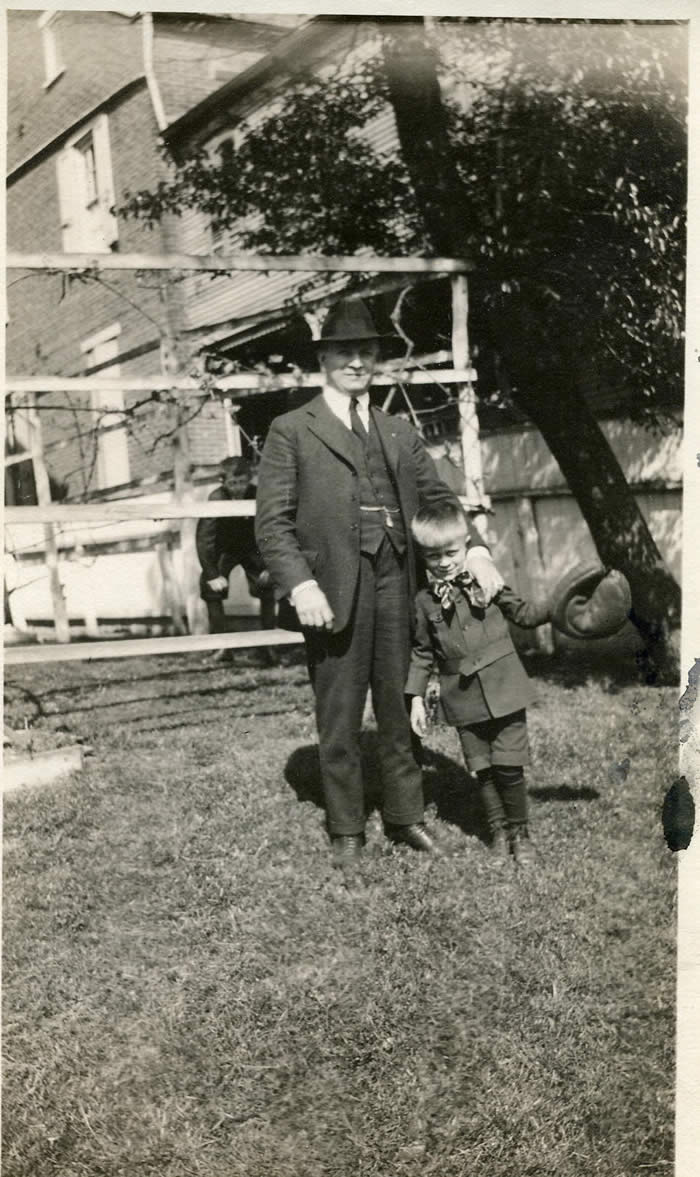

Grandmother, Mary Estelle McCaa Andes and her grandson
Eugene Benton Andes II. Picture probably taken on a visit to
Thomas and Orpha in Florida during WW2, when Thomas was stationed
there briefly at an Army Air Corps base. Mary Estelle was accustomed
to the good life and after the death of Eugene in 1931, she never
really adapted to her "reduced circumstances" according to my
father. She had to clean her own house and cook for her family,
neither skills she ever fully acquired. I remember her as a rather
stuffy, formal old lady, who sold antiques from her home in later
years. In the picture, she seems a bit over dressed for the beach.
And a second picture at the beach. Having a great time.
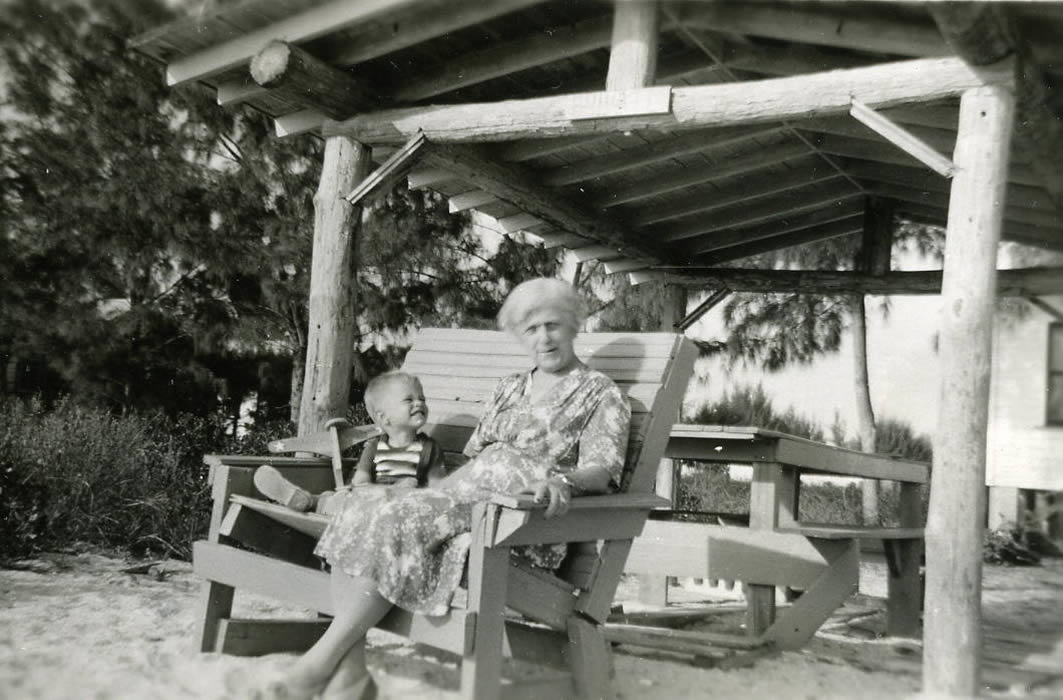
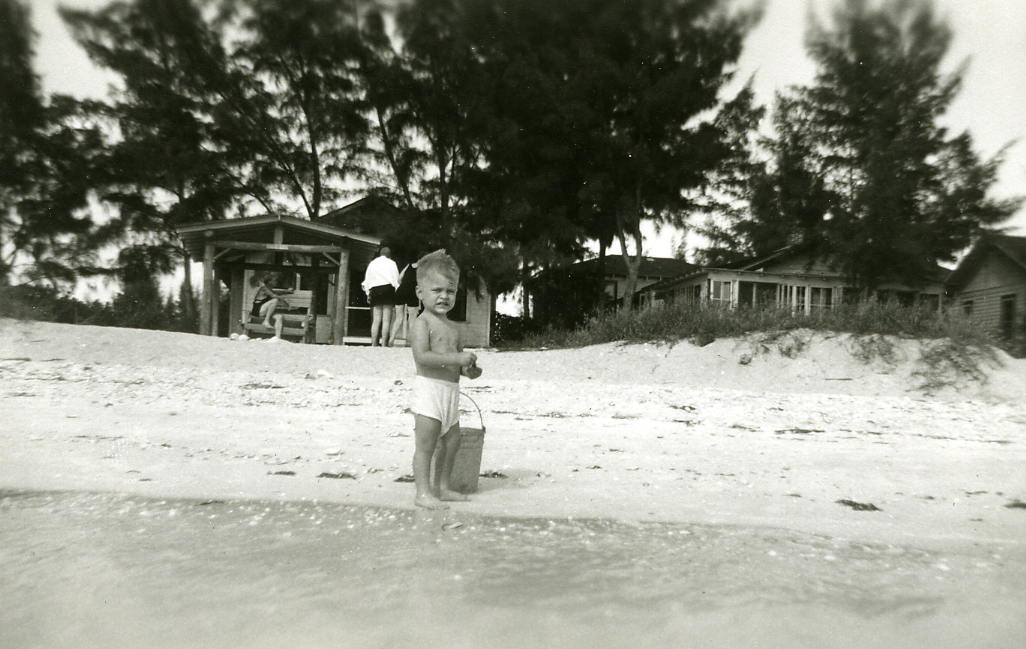
Thomas was sixteen years old when his father died of
carbon monoxide poisoning and the family circumstances changed.
He attended Franklin and Marshall College in Lancaster, as did
most of the men in the family, and while there, he decided that
he wanted to become a physician. That goal was first forbidden
by his mother as his older brother Richard had already decided
he wanted to be a doctor and "one doctor in the family
was enough". So Tom, who was active in the theatre at college
then announced that he would become an actor instead, and
thus got permission quickly to pursue medicine as a career.
Thomas went to Temple University Medical School and while there
on rotation through University of Pennsylvania Hospital, he
met Orpha Leach, who was then the head nurse of the Obstetrics
Unit there. She had trained at Muhlenberg School of Nursing in
New Jersey and as a student nurse had helped care for victims of the
Hindenberg disaster. After dating a while, they married in secret,
in 1939, as nurses were not permitted to be married at the time.

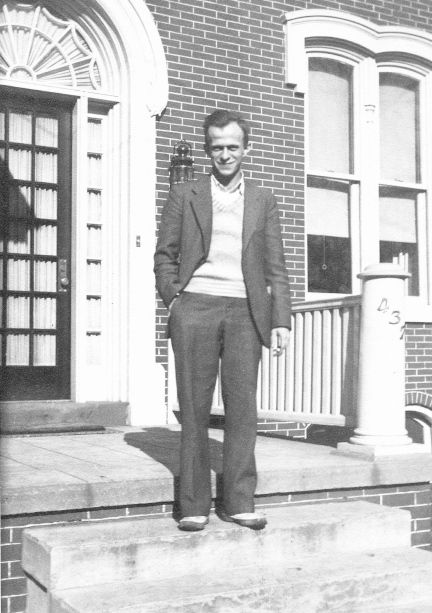
Orpha Kathryn Leach was from Lemoyne, Pennsylvania, across the Susquehanna
River from Harrisburg, the state capital. Lemoyne was an early bedroom
community as it was on the western end of one of the early bridges spanning
the river and replacing the earlier ferries. Lemoyne was first named Bridgeport
and later Riverton, becoming Lemoyne in 1905 when it was granted its first post office
and became a "borough". Samuel Bowman Leach was an early resident of Lemoyne
operating a concrete business there from early in the 20th century until retirement
in the 1950s. Orpha was one of eight children and was an avid tennis player in
her youth. Her father even constructed a tennis court on the vacant lot adjacent
to their home for her to play upon. Samuel had been widowed twice, his first wife
dying after the birth of the fourth child and his second dying after the birth of
the eighth. Orpha had been raised by her step-mother, Samuel's third wife, Sarah Jane.
When Thomas graduated from Medical School, he applied to the
training program in surgery at the Mayo Clinic, but was not
accepted. Instead, the couple moved to Leaksville, North Carolina,
where he began an internhip at the hospital there training in surgery under a
prominent local surgeon, Dr. C.V. Tyner, in July of 1941.
Below is a picture of the hospital at that time, and a photograph
of the house provided to the couple by the hospital.
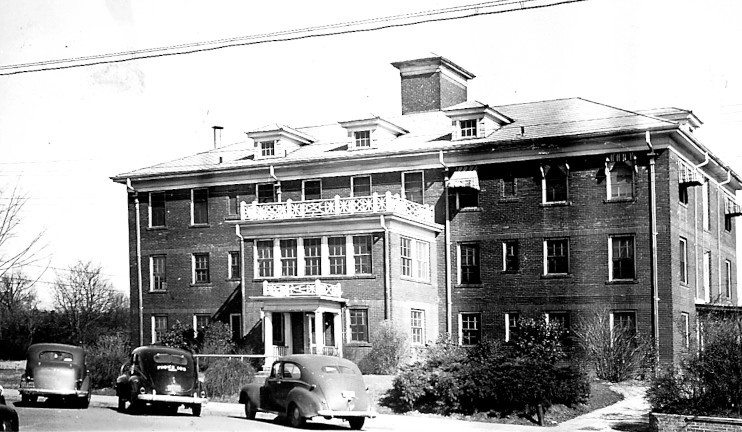
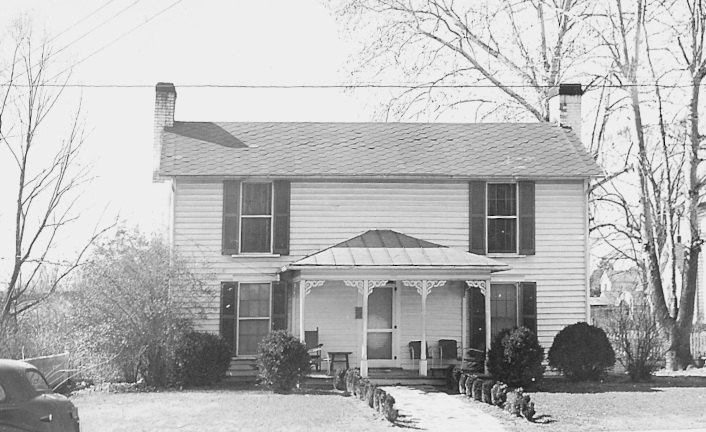
With the start of WW2, Thomas enlisted in the Army Air Corps and began his service
in mid 1942. Orpha, pregnant with their first child, remained in Leaksville unti
delivery and later relocated to Pennsylvania to stay with family until Thomas' return.
Here are a few pictures of Thomas during his time in
North Africa. His group supported the Army Air Corps
as it fought Italian forces across Africa to Tunesia.
The fighter aircraft were P-40s, as in the picture below.
Some wings operated
medium bombers, later in the campaign.
The monkey was a pet, named "Queenie", here posing with
Thomas beside an ambulance.
There is one "war story" from that time, about an incident
that happened in Libya and a connection made many years
later between the children of those involved. You can
find it here.
And here's a picture of Thomas and Orpha together with his older brother
Bill and his wife Dorothy at a night club celebrating Tom's safe return.
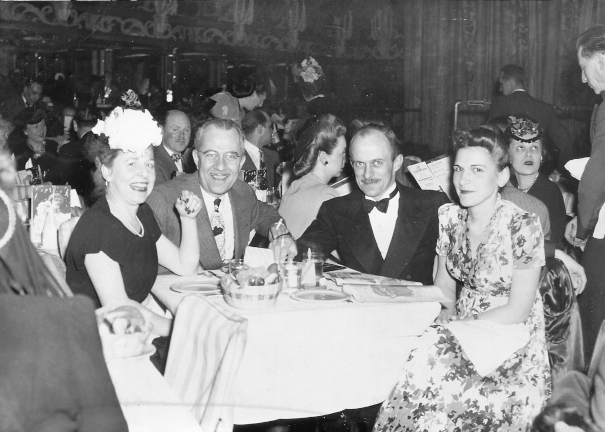
After the war, Thomas spent another
couple of years in the Army Air Corps. He was stationed for a time at
an air base in Florida
and later in California. The family lived in Cosa Mesa, which
was at that time a
small rural town. Thomas started raising chickens at the house
and in theose days of meat rationing, soon had a pretty brisk business.
And lots of chickens.
The family ate chicken often. Orpha recalled that reading
the popular book of 1943, "Chicken Every Sunday", reminded her of those
days, although they did not take in boarders.
After discharge from the Army, Thomas practiced for a time in Lancaster, Pennsylvania,
but soon decided he wanted to specialize in Psychiatry. The family moved
to Harrisburg, Pennsylvania, to the State Hospital there for his training,
and later moved multiple times as he advanced the career ladder. We lived
in West Virginia, North Carolina, Kentucky, and Massachusetts and along
the way the family grew by adding a brother, Sam, and a sister, Karen.
The final job was at the Gardner State Hospital in Gardner, Massachusetts.
The hospital was the site of a former "State Colony" for those with
mental illness and had been designed as a self-sufficient entity, with
its own rail station, power generation, extensive farming operations, and
food preservation and storage capacity. The "ice pond" was still there and
and "ice house", but no longer used for ice making and storage. It made
a great pond for fishing and model boat sailing. Gene spent many days
roaming around the hundreds of acres of fields and woodlands with the
family dog, "Sport", and sailing model boats on the pond with a neighbor
friend, Bill Cordes. Bill's father, Warren, was Gene's introduction to
model ship building, as told
here. This is where and when Gene acquired his love of New England
weather and the countryside. And interest in ship modeling. Jeeps came
later, as you will see.
Photos below show the family dog, Sport on the left. On the right is
a picture of Gene and Bill Cordes launching one of Gene's early boat
models. In this case, it was a scratch built motorized trimaran based
on a vessel shown on the dust jacket of a book "The Phantom Shark", by
John Blaine, one of the Rick Brant "science and adventure" series, from
around 1949.

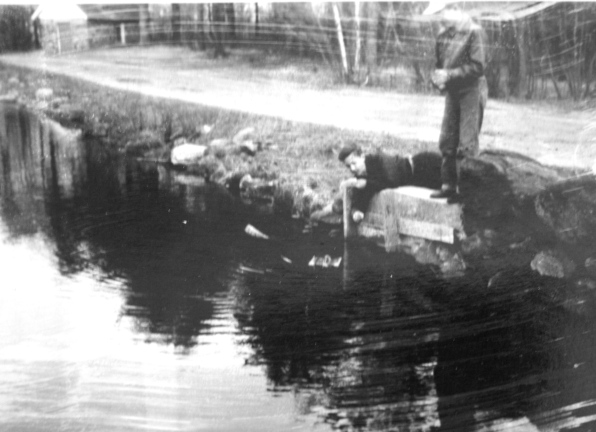
In 1958, the family moved from Massachusetts to Pennsylvania as
Thomas' health had deterioriated to the point he could no longer work.
Thomas and Orpha chose to settle in Lemoyne, and found a house just a
block or two away from two of her siblings and close to many more of
her extended family. Thomas died later that year and Orpha returned
to work shortly thereafter and lived in Lemoyne until her children
had completed college and graduate schools before selling the house
and moving first to an apartment in adjacent Wormleysburg and later to
a retirement communnity in Mechanicsburg where she lived to the age of
93, dying in 2008.
Gene finished high school in Pennsylvania, and in high school and
college worked summers at a Lutheran Church summer camp in Biglersville,
Pennsylvania. He worked on the "Grounds Crew" at Camp Nawakwa. And,
although he and Ellen Coleman had been acquainted at Cedar Cliff
High School, it was at that camp that they had their first date. Which
went badly enough that there was not a second date for nearly four
years.
Here's a picture of the Jeep used by the groundskeepers at Nawakwa. It
was a civilian jeep, a CJ-2A from about 1947 that had been converted to
a small pickup truck by Mike the blacksmith who lived and operated his
shop about a mile down the road from the camp entrance. Riding around
the grounds in that jeep was when Gene first fell in love with Jeeps, so
he has Nawakwa to thank for finding two of the great loves of his life.


And this is an excellent transition to Ellen's family story.
Ellen's mother Clara Annetta Dyer Coleman was born 1907 in
Gilberton, Pennsylvania. At that time, Gilberton had a population of about
1,000 people, all Caucasian: Irish, English, Welsh, Hungarian, Lithuanian, and
Polish, first or second generation immigrants, who had come to work in the
coal mines.
Clara had two brothers, Lewis, born, 1911 and John , born 1918, and one
sister, Edna born 1909.
Clara's father was Charles Dyer, who worked in the colliery in
Gilberton, and her mother was Clara Hinkel, a homemaker who also
played the piano.
Mary Elizabeth Hinkel (Aunt Mame) born 1889 was Clara Hinkel's sister, Clara Dyer's aunt.
She wanted to be a nurse, but her mother forbade it because "No decent girl would want to
go in training to be a nurse". Her mother also found fault with every suitor,
and Aunt Mame never married, but instead shared her love and joyful
spirit with all her nieces and nephews. She
lived and worked most her life in Philadelphia and died there in 1990.
In 1924 Clara Dyer began a two year study program in Secondary Education at
the Keystone State Normal School and switched to a three year program
in Library Science, graduating in 1927. In 1931, she returned to the college,
now the Keystone State Teachers' College and completed a Batchelor's of
Science degree in Library Science in 1935. Keystone State is now Kutztown
University, where there is a scholarship in Library Science named for
Clara. Soon after graduation, she found a job as a teacher and librarian in Hegins,
Pennsylvania, a farming community about 20 miles southwest of Gilberton, where
she met Bob Coleman.
Bob was born 1910 and was from Hegins.
He had
graduated from
Franklin and Marshall College, Lancaster, Pennsylvania, with a degree in
chemistry/chemical engineering, but had a hard time finding a job in
the depths of the Great Depression. Bob and Clara dated for a while
and married in October, 1935, but kept the marriage
secret because teachers were not allowed to be married at the time.
By 1936, the couple could announce their marriage, had moved to Lemoyne,
Pennsylvania, and Bob was working as a chemist in the Pennsylvania
Department of Highways Laboratory in Harrisburg. Their son Jerry was
born in 1938.
Ellen was born in 1943 by which time the family was
living in New Cumberland, Pennsylvania and Bob was working as a U. S.
Postal Clerk in Harrisburg. They had moved there after living for a time
in the Philadelphia area when Bob was working as a chemist for the Gulf
Oil Refinery in Philadelphia. He had decided that a job with Civil Service
protection was especially desirable for a family man. He rose through the
ranks in the Postal Service, ending up as one of the half dozen or so
area managers with responsiblities and headaches to match. He help implement
the new Postal Code (ZIP) system in the 1960s.
Jerry married Colette LaVanture in 1959.
Ellen married Eugene Andes in 1965.
Bob retired in 1971 and Clara and Bob moved to Sun City Arizona at that time.
Bob died 1979 at age 69. Clara moved in 1980 to a Retirement Community in Peoria,
Arizona after Bob's death.
Clara loved travel. She and Aunt Mame made train trips and, later, driving trips
to many places
across the U. S. in Clara's Ford roadster. She and Bob also traveled
extensively together, visiting all fifty States and Europe, and continued
to travel together after they retired.
In 2001, Clara moved
herself from Peoria, Arizona, to a Personal Care Home in Millersburg, Pennsylvania,
where she spent the rest of her life.
Not quite back in Schuykill County, but
in adjacent Dauphin County, along the Susquehanna River 25 miles from Hegins
and 45 miles from Gilberton, so she was home. She lived there until she died
in 2012 at 104 years of age.
The pictures below show Bob and Clara around the time they retired and moved to
Arizona and Clara at age 100.
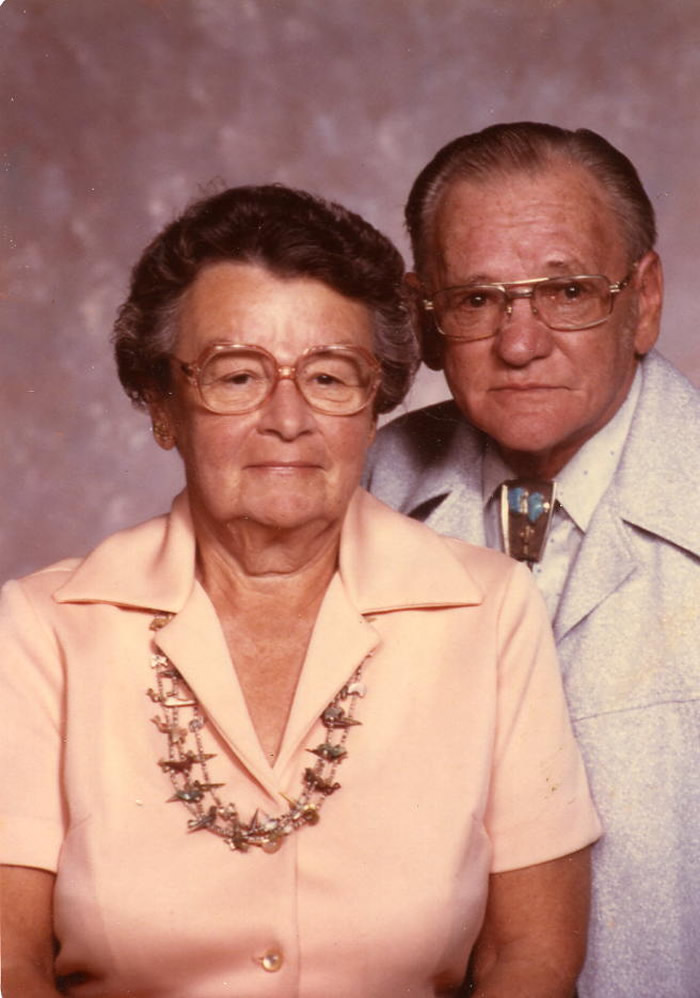
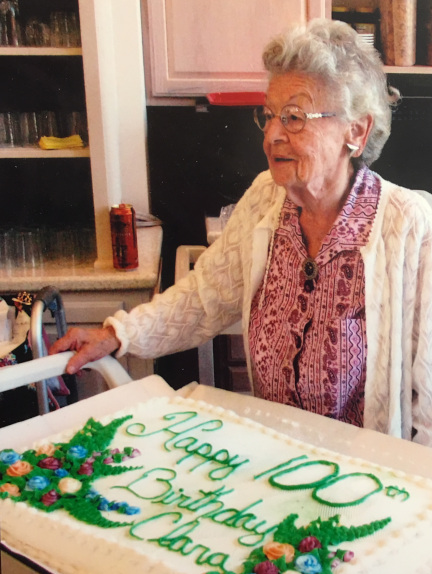
Clara, with Aunt Mame's help, did extensive geneologic research on
her and Bob's families, tracing ancestors back to origins in Germany.
Copies of her research are available to interested persons.
Following are a few photographs from Clara's collection. The first
shows the couple in 1935 standing by Clara's Ford Roadster. The second
shows them in 1947 on one of many family camping trips.
Bob as a college student and during a trip in
1947 back to the family farm in Hegins.
Clara and her mother in 1942 and Clara with
her children, Jerry and Ellen, in 1947.
Ellen and Clara on a visit to Pennsylvania and a picture
of Clara's 100th Birthday party.
Photo of Bob and Clara with Jerry and Ellen
and their spouses

Ellen and Jerry had pretty typical small town childhoods with
plenty of camping trips with extended family and visits to
aunts, uncles, and cousins. Here are some photos of Ellen and
Jerry
through the years and some of Ellen and her best friend, Barb.
There are a couple from Camp Nawakwa summer camp
and some of her as a harpist.
Ellen was
a skilled harpist and entered college as a music major but
ended up a German major. She entered graduate school in German
but soon traded that career track for Library Science. Ellen
got her Masters in Library Science in 1967 and has worked much
of her life in various library environments including public
libraries, middle school, high school, college, and university
libraries. She gave up playing the harp after we moved to rural
New Hampshire because the commute to lessons was too great and
she wanted to devote more time to her new life there. And,
before long, to her family.
The final picture is of a practice room at the Santa Fe Opera.
A reminder of past days.
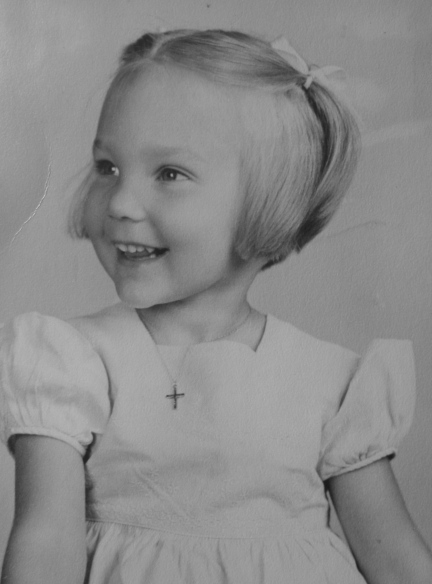

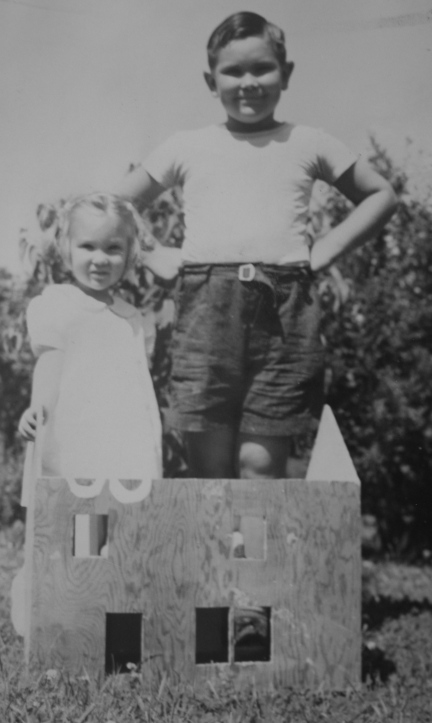
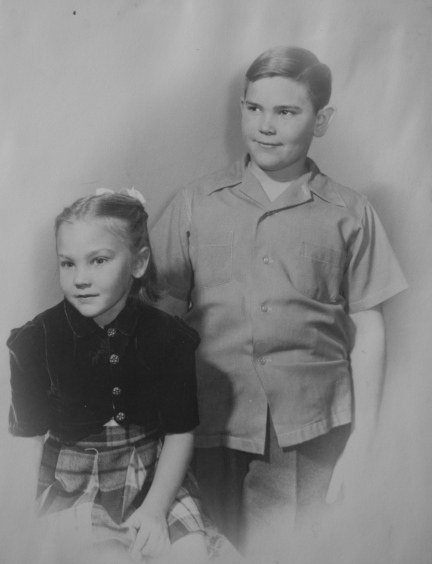
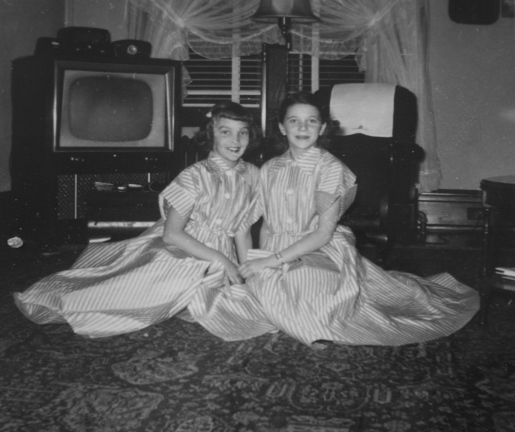
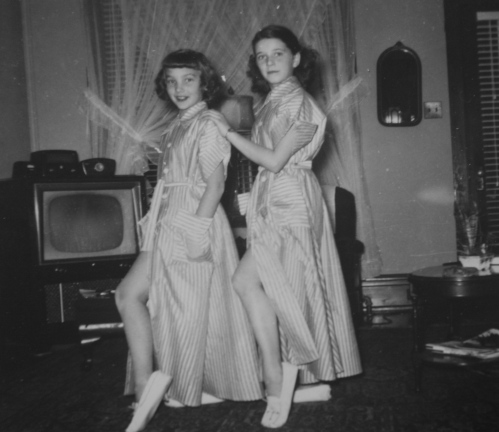
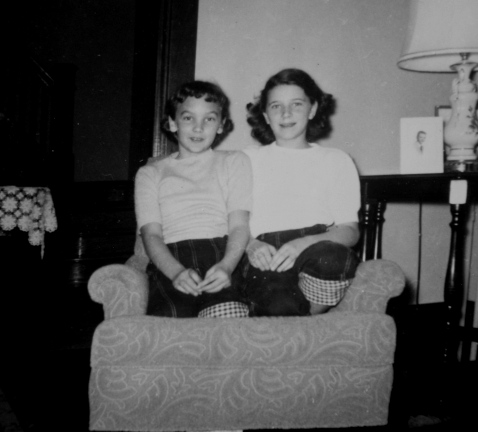
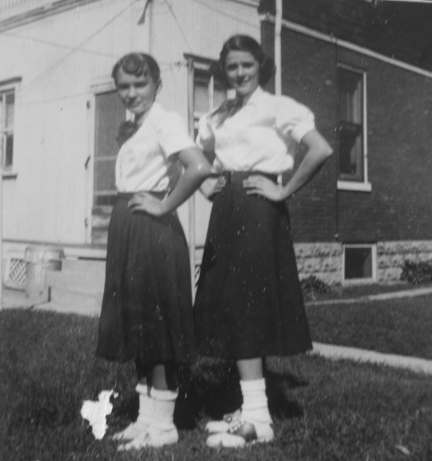
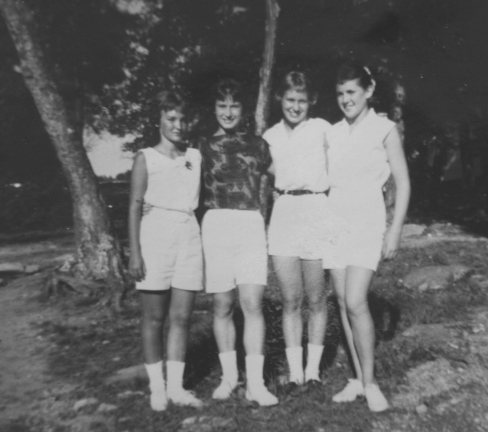

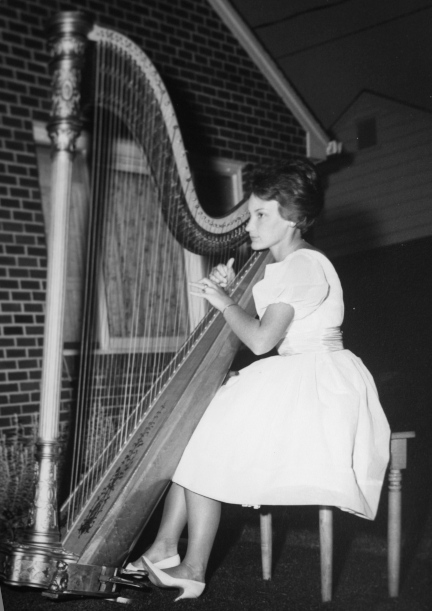

A harpist, or the spouse of one, will appreciate this picture.
